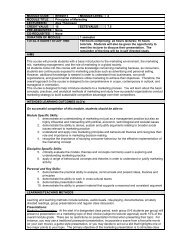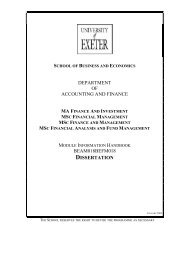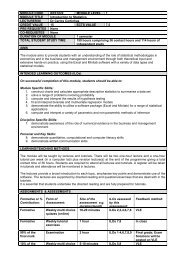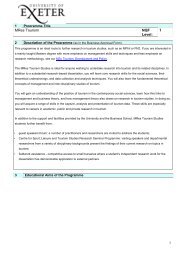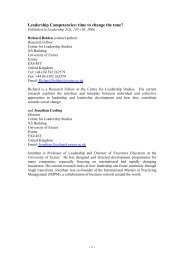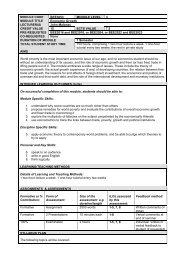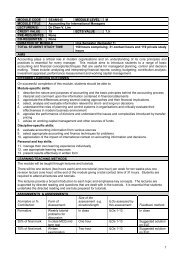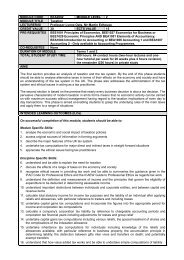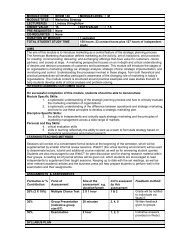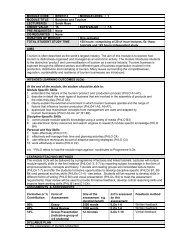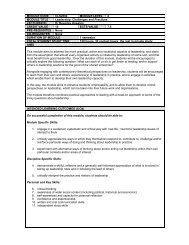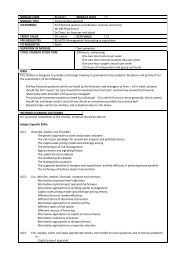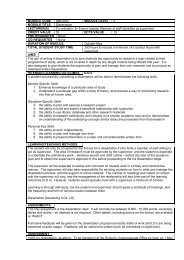Francesca Sanna-Randaccio paper - The Business School
Francesca Sanna-Randaccio paper - The Business School
Francesca Sanna-Randaccio paper - The Business School
You also want an ePaper? Increase the reach of your titles
YUMPU automatically turns print PDFs into web optimized ePapers that Google loves.
<strong>The</strong> attempt to moderate the competitiveness-driven job leakage has influenced the<br />
allocation rules in the Waxman-Markey Bill even more than in the EU Directive, at the cost of<br />
creating a less cost-efficient cap and trade system. <strong>The</strong> US proposed allocation mode amounts to<br />
an output subsidy which decreases the marginal (and unit variable) cost of US production, thus<br />
lowering the incentive to both partial and total relocation. However this system “will not allow the<br />
full CO2 price signal to diffuse through product prices” (Reinaud 2008, p. 84) as firms are not<br />
confronted with an opportunity cost for the permits. If a firm reduces production it does not enjoy<br />
extra permits to sell into the market; it will instead receive a smaller amount of allowances/rebates<br />
since these are linked to current output. <strong>The</strong> US system thus hampers demand reduction of CO2<br />
intensive products and possibly innovation. On the contrary the approach adopted by the EU, by<br />
fixing before the trading period the amount of free allowances allocated, creates an opportunity<br />
costs for the permits and thus introduces a visible CO2 price signal. Fixed free allocations<br />
represent a lump sum transfer to producers and, when complemented by new entrant reserve and<br />
closure rules, may affect firms’ location decisions. <strong>The</strong> EU system can thus be seen as leading to<br />
an increase in the fixed cost of relocation, since by shifting production abroad firms renounce to a<br />
lump sum transfer. We saw (Eqs. (14), (18)) that the relocation of production decision is<br />
influenced also by fixed costs considerations.<br />
As to border tax adjustment on imports, which plays an important role in the US but not in<br />
the EU legislation, our model suggests an additional reason for such measure not to be adopted.<br />
An import tax does not affect the incentive to partially relocate production, which emerges as the<br />
most likely location strategy shift induced by unilateral climate policy. This is the case since, with<br />
partial relocation, the domestic producers continue to serve the national market from the home<br />
plant. A large number of other important economic problems discouraging the adoption of a<br />
border tax adjustments on imports have been discussed in the literature (OECD 2009, p. 37 ).<br />
To sum up, climate policy in both regions has been heavily shaped by competitiveness-<br />
driven carbon leakage considerations, due to strong pressures from industry groups. <strong>The</strong> EU<br />
allocation mode seems to strike a better balance between the aim of moderating relocation-driven<br />
carbon leakage and the cost-effectiveness of the policy. On the other hand, the EU criteria for<br />
24



